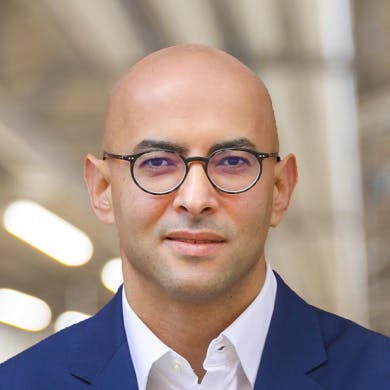How can medtech prioritize access and usability?
Who do we innovate for?
It seems like a simple question. We may delve into the specifics of designing a medtech product. The existing need, the market projections, the user testing. But the question of who uses a product—or even who gets to use a product—becomes ever more complicated.
As the AMA’s first clinical informaticist leader, Jesse Ehrenfeld has frequently been asked to address access amid the rise of medical AI, EHRs, and telehealth. In a recent interview, he said, “We want to make sure that these technologies work for everybody involved and are an asset, not a burden.” Notably, ‘everybody involved’ means both providers and patients. And everyone in between.
In today’s edition of our newsletter, we’re discussing haptic suits, hearing aids, and exoskeletons. All of these technologies are designed to benefit patients with disabilities. To make healthcare, better quality of life, and even careers like surgery more accessible.
But the question of equitable access to these technologies is more complicated. In sum: We may study and design products and devices to benefit people with specific needs. But we must also ensure that our intended users can actually use this technology.
One of the biggest barriers to this access, of course, is cost. And on the patient side, that also means insurance coverage. We already know cost is a huge factor in why patients delay or even go without medical care.

But cost isn’t the only barrier to access and use. It’s also about ease of use. Take the path we’ve walked with EHR adoption. This technology was designed to make medical practice easier and more efficient for providers. And to create better care outcomes for patients. But in many cases, lack of interoperability and provider tech fatigue has gotten in the way of these design goals. The WHO and HL7 are teaming up now to address the former issue, creating an approach to global interoperability standards.
But that’s not where the usability issue ends. With patients increasingly accessing their digital medical records via patient portals, the gulf between availability and usability has grown. While their information is at their fingertips, patients have grown concerned with errors or unclear presentation of information in these portals themselves. While patient access to health information is wonderful, it’s how that information is presented—and interpreted by a healthcare provider—that makes a difference. All the while, these miscommunications stand to give providers more work to do to close the gap. When that should be the job of developers and regulators rolling this technology out.
Now, we look to medical AI as the next frontier of tech-enabled care. How can we ensure it increases access to quality care for patients (and quality work environments for providers)? We’ve discussed how some insurers in the U.S. have started using algorithms to limit medical coverage for certain patient populations. That’s the most egregious example of how medical AI may be exploited to limit access to care. But we also know medical AI can improve access to quality care. To prepare for that future, we must have medical providers literate in this technology. So they can use it effectively in their work (and potentially become innovators themselves). The increasing incorporation of AI tools—like GPT-4—in medical training is a promising sign.
I don’t present these access and usability issues to be a technological pessimist. If you’ve been reading MedTech Pulse for a while, you know I’m anything but. What I do hope to encourage is that we medical innovators resist the urge to “stay in our lanes.” We must continue asking ourselves whether we’re truly serving patients and providers with our products. Whether our products are fully reaching and benefitting the intended audience. And if they’re not, we must use our influence to help close those gaps.
That’s the way to build a global, efficient, and harmonious health system for all. And isn’t that what we’re working for?
